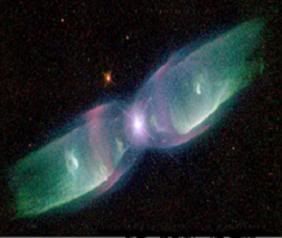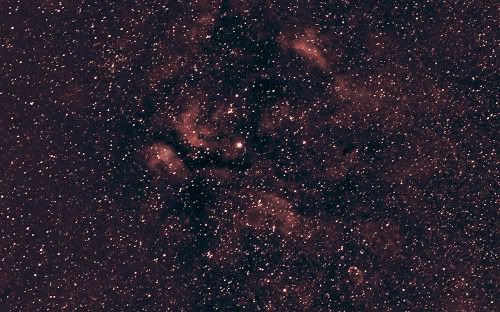|
|
Post by glactus on Oct 22, 2008 16:10:52 GMT
 M2-9 The Butterfly nebula Minkowski 2-9 or the Butterfly nebula is a planetary nebula that was discovered by Rudolph Minkowski in 1947. It is located about 2,100 light-years away from Earth in the direction of the constellation of Ophiuchus. Magnitude is 5.6 M2-9 represents the spectacular “last gasp” of a binary star system at the nebula's center. The primary component of this binary is the hot core of a star that reached the end of its main-sequence life cycle, ejected most of its outer layers and became a red giant, and is now contracting into a white dwarf. It is believed to have been a sun-like star early in its life. The second, smaller star of the binary orbits very closely and may even have been engulfed by the other's expanding stellar atmosphere with the resulting interaction creating the nebula. Astronomers theorize that the gravity of one star pulls some of the gas from the surface of the other and flings it into a thin, dense disk extending into space. Such a disk can successfully account for the jet-exhaust-like appearance of M2-9. The nebula has inflated dramatically due to a fast stellar wind, blowing out into the surrounding disk and inflating the large, wispy hourglass-shaped wings perpendicular to the disk. These wings produce the butterfly appearance when seen in projection. The outer shell is estimated to be about 1,200 years old.  Credits: This is a NASA/Hubble image |
|
|
|
Post by Andy Mac on Oct 24, 2008 10:31:48 GMT
Now that I wasn't aware of Henry. There is also an emission nebula called the Butterfly Nebula (official designation IC1318) which is centred around Sadr (or gamma Cygni) in the constellation of Cygnus. It is an easy target to image, as all you need to do is to centre gamma Cygni in your camera's field of view. I've never heard of any reports of it being seen visually, however. Anyway here is a shot that I took a few months ago when Cygnus was riding high for us 'northerners'.   |
|
|
|
Post by glactus on Oct 24, 2008 21:50:28 GMT
That is a nice shot of IC 1318 Andy. I always refer to it as the red nebula and of course Hubble makes it into a remarkable red glow. Actually Sygnus has some very interesting objects for the amateur Astronomer.  |
|